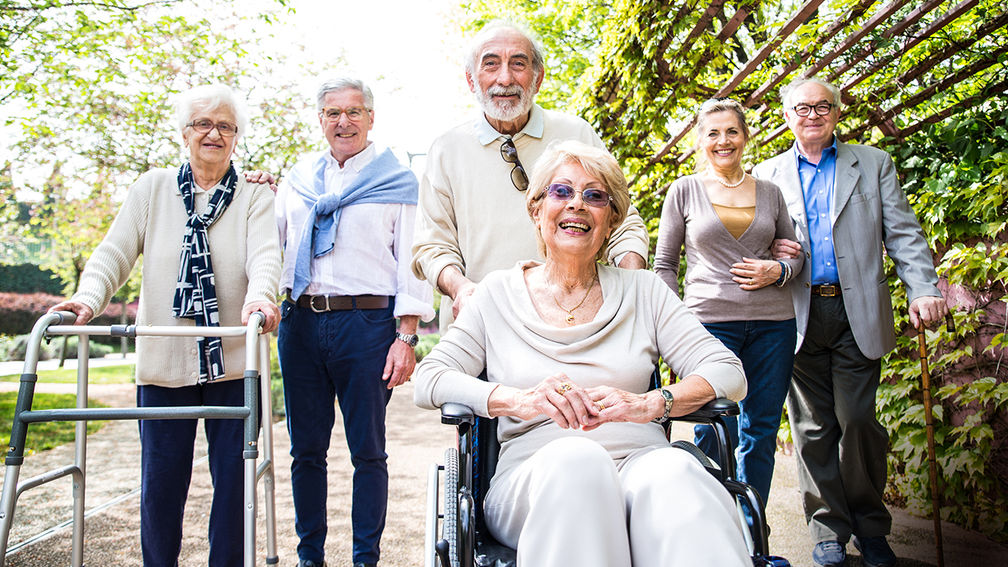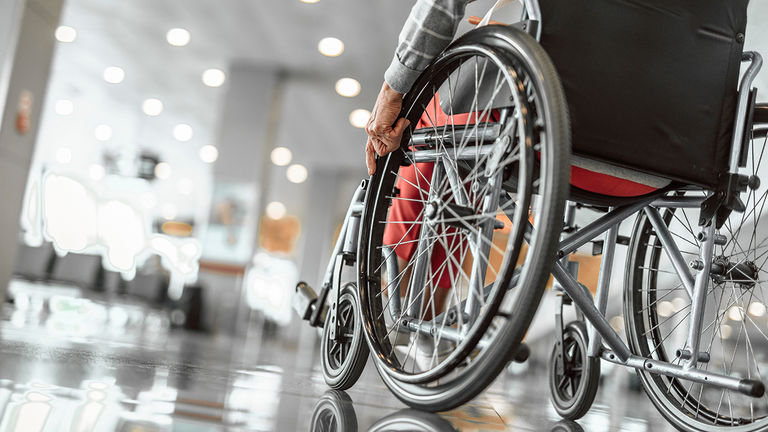Written by Emma Weismann for TravelAgeWest, March 6, 2023

Credit: 2023 oneinchpunch/stock.adobe.com
Traveling can be riddled with unexpected snafus.
As a full-time wheelchair user, Kristy Durso knows this well. What some simply see as an inconvenience — a heavy door, a tight airplane lavatory, or even the awkward placement of shower controls in a hotel bathroom — could pose a safety risk for her and other individuals with limited mobility.
In fact, when Durso, the owner of Incredible Memories Travel, is on the road, she’s always scanning her surroundings, taking note of any obstacles that may ruin a future trip for a client with accessibility needs.
“Imagine if you got to a hotel room, and you are not able to get into the bed because it’s at chin height,” she said. “High beds are very fashionable, but a super-high bed means we can’t get in it. Or, imagine that your shower had a lock on it, and the only way to get into that shower is if you call down to the staff and ask them to bring you the key. In reality, that’s the kind of thing that happens to us.”
The Americans with Disabilities Act (ADA), signed into law in 1990, put federal protections in place to help Americans living with disabilities navigate many areas of public life.
And while Durso says she believes the ADA was created in good faith — and was even considered cutting-edge at the time — she believes it now places greater emphasis on basic compliance than true function.
“[The ADA] was a great start to building accessibility,” she said. “Nobody had ever done anything like it, and we had lots of champions — people who had disabilities — who were involved in creating that [law] and bringing it about. What has happened since is that we’ve kind of lost our way. We’re missing the whole human component. The focus is on being compliant to the law, and not actually considering, ‘Why does this matter?’”
It’s an issue that inspired entrepreneur Jake Steinman to create TravelAbility, an organization with a mission to improve the travel experience for people with disabilities through events, newsletters, resources and education.
“I’ve found that the travel industry consists of three mindsets: One is a mindset of fear … of getting complaints and getting sued, so, for them, it’s all about compliance at a baseline level. Another mindset is one of idealism — these are the people who feel it is unfair to not be inclusive for everyone, and so they become hyper-accessible,” he said, noting that museums and certain attractions, such as theme parks, often fall into this camp. “And the third mindset was the one I had, which is that this is a growing market — the demographics are in favor of it — and people are going to age into a disability, if they’re lucky. So, we’re creating programs to fill the gaps.”

Credit: 2023 Yakobchuk Olena/stock.adobe.com
Disabilities on a Spectrum
More than a quarter of American adults (26%) live with some form of disability. The Centers for Disease Control & Prevention offers insight into into six functional disability types: mobility disabilities (which include 14% of U.S. adults with a disability); followed by cognition disabilities (at 11%); independent living disabilities (which references the difficulty one has in running errands and otherwise providing for themselves alone, 7%); hearing disabilities (6%); vision disabilities (5%); and self-care disabilities (categorized by the difficulty in dressing or bathing oneself, 4%).
The wide-ranging community is what disability expert and author Kathie Snow calls “the nation’s largest minority group, which is simultaneously the most inclusive and the most diverse.”
“Everyone’s represented — people of both genders and of all ages, as well as individuals from all religions, ethnic backgrounds and socioeconomic levels,” she wrote in a 2005 essay. “Furthermore, the disability community is the only minority group which anyone can join, at any time.”
It’s also a group that has big bucks to spend on travel: Of the 61 million adults in the U.S. who identify as living with a disability, 27 million of these travelers took a total of 81 million trips from 2018-2019, spending $58.7 billion on just their own travel, according to disability nonprofit Open Doors Organization.

Credit: 2023 Osato-Kurita-Circus/stock.adobe.com
Planning Travel: Not a One-Size-Fits-All Approach
Considering the size of the market, travel advisors have a prime opportunity to mitigate potential stressors for this group.
And the hunger to learn more about selling this type of travel is certainly there: A survey last month of more than 250 agents, part of TravelAge West’s Need to Know research series, revealed that 63% of respondents are already selling travel to clients with accessibility needs. However, 79% want to learn more about it, and 80% of those surveyed believe that more education on the topic would help their businesses.
And there are many potential clients who might be “staying home instead of using a travel advisor,” said Dawn Barclay, author of “Traveling Different: Vacation Strategies for Parents of the Anxious, the Inflexible, and the Neurodiverse.” (Her book, it should be noted, addresses the travel challenges faced by families with both neurotypical and neurodivergent members, the latter of which may include non-visible disabilities — also called “hidden” or “invisible” disabilities — such as autism spectrum, attention and/or mood disorders.)
For parents of children with neurodivergent disabilities specifically, “the biggest misconception is that they don’t believe they are entitled to travel, or that there won’t be venues that will understand and accept them,” Barclay said.
Durso of Incredible Memories Travel describes this as a circular problem: People with disabilities know their needs are not going to be met at certain businesses, so they don’t venture out to patronize them. That place, in response, doesn’t actively see the disability community represented in its clientele, and doesn’t feel an urgency to fix any existing problems.
Global research backs this up: A recent report about inclusivity from Expedia Group Media Solutions shows that only 54% of the 11,000 consumers surveyed worldwide believe they have seen options that are accessible to all abilities when booking a trip (even when 92% of respondents believe it’s important for travel providers to meet the needs of all travelers).

Credit: 2023 janckerphoto/stock.adobe.com
To continue reading, CLICK HERE
